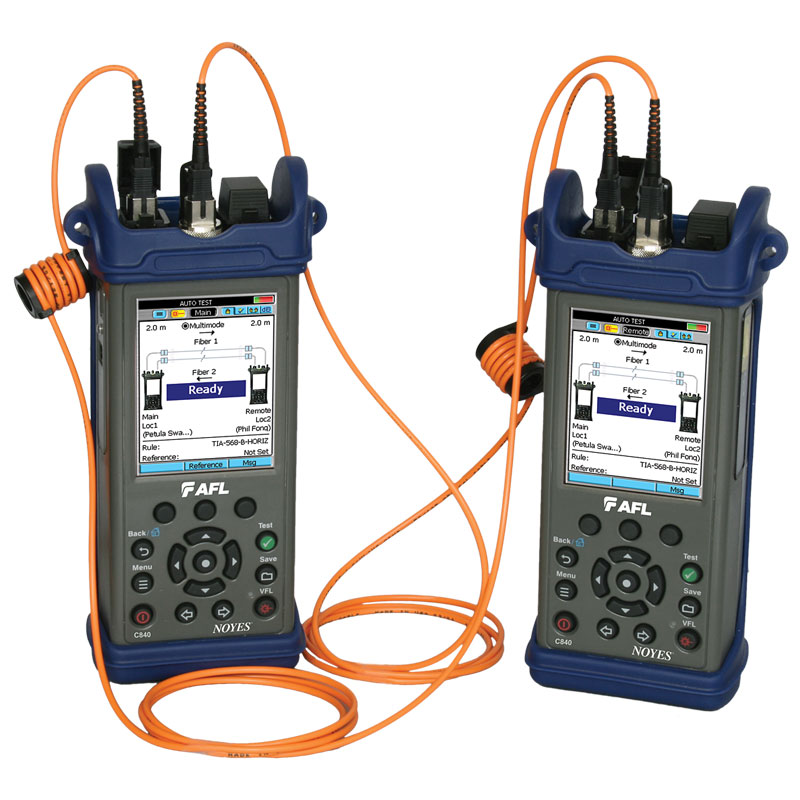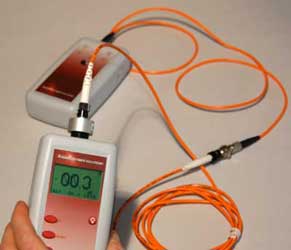Advanced robotic vision solutions improve automation and precision.
Wiki Article
Unveiling the Secret Utilizes of Optical Fiber Examining for Efficient Data Transmission
In the realm of modern interaction, optical fiber testing emerges as a vital practice for optimizing information transmission. Recognizing the diverse applications of optical fibre testing welcomes a much deeper exploration right into its crucial function in shaping the future of information interaction.
Relevance of Optical Fiber Testing
The importance of optical fibre screening can not be overstated, as it serves as a vital component in ensuring the integrity and effectiveness of data transmission systems. In a period where high-speed communication is extremely important, any type of deficiencies in fiber optics can lead to substantial data loss and minimized efficiency. Extensive testing procedures are crucial to verify the integrity and performance of optical wires.Evaluating permits the recognition of problems such as micro-bends, macrobends, and splice losses that could impede signal quality. Furthermore, it provides understandings into the total attenuation and transmission capacity abilities of the fibre, making sure that the network fulfills certain functional criteria. Routine testing not only boosts system efficiency however likewise lengthens the life-span of the infrastructure by identifying prospective problems prior to they escalate into pricey failings.

Sorts Of Optical Fiber Tests
Different kinds of optical fiber examinations are conducted to make certain the performance and reliability of fiber optic networks. These examinations can be classified right into numerous essential types, each serving a certain function in assessing the stability of the fibre.First, Optical Time Domain Name Reflectometry (OTDR) is a popular test that determines mistakes, interlaces, and connectors within the fibre. By sending out pulses of light and evaluating the shown signals, professionals can identify concerns along the fibre's size.
2nd, insertion loss tests assess the quantity of signal loss when light travel through adapters or splices, which is vital for preserving network efficiency.
Third, return loss tests gauge the amount of light showed back towards the resource, providing insights into the top quality of links and possible sources of disturbance.
Furthermore, continuity examinations guarantee that the fibre path is total, permitting specialists to confirm that the fiber is undamaged with no breaks. fibre testing equipment.
Lastly, visual mistake locators utilize noticeable light to identify breaks or severe bends in the fiber, assisting in fast troubleshooting. Jointly, these examinations create a thorough technique to maintaining optimal efficiency in fiber optic networks.

Applications in Network Maintenance
In contemporary telecommunications, reliable network upkeep counts heavily on optical fiber testing to recognize and rectify issues quickly. Regular testing makes sure that the network operates at ideal performance degrees, decreasing downtime and boosting user experience.Among the main applications of optical fibre testing in maintenance is the detection of mistakes, such as breaks, flexes, or improper links. Methods like Optical Time Domain Reflectometry (OTDR) permit service technicians to situate these issues properly and examine the quality of the fiber link. Additionally, loss screening verifies the integrity of the optical path, guaranteeing that signal attenuation stays within appropriate restrictions.
Routine maintenance testing also assists in preventative actions, identifying possible issues prior to they escalate right into substantial failures. This positive technique can save companies both time and funds. Throughout upgrades or growths, optical fiber screening guarantees that brand-new installations integrate effortlessly with existing facilities.
Enhancing Information Transmission Integrity
Effective network maintenance with optical fiber testing not just addresses prompt problems but additionally plays a substantial function in boosting information transmission dependability. By recognizing faults, gauging signal loss, and examining the general problem of fiber optic cords, screening makes certain that prospective issues are fixed prior to they escalate into substantial interruptions.Normal optical fiber screening, such as time-domain reflectometry (TDR) and optical time-domain reflectometry (OTDR), permits service technicians to pinpoint the exact locations of breaks, flexes, or port concerns within the network. This proactive strategy not only lessens downtime yet also maximizes the efficiency of information transmission by guaranteeing that the paths for signals are clear and working effectively.
Moreover, testing help in validating adherence to industry standards and specifications, which is vital for maintaining the honesty of data flow. By making certain that each connection fulfills called for limits for loss and high quality, organizations can boost their confidence in the integrity of their data networks.
Ultimately, spending in detailed optical fiber testing not just boosts data transmission dependability but also supports the long-term functional efficiency of communication facilities.
Future Fads in Fiber Screening
Emerging innovations are positioned to revolutionize fibre screening, paving the way for improved performance and accuracy in data transmission diagnostics (ofda). As the need for faster internet and higher transmission capacity proceeds to climb, the integration of innovative tools optical fibre diameter analyser such as fabricated knowledge (AI) and equipment learning (ML) is established to transform standard fibre testing approaches. These modern technologies will certainly enable anticipating upkeep and automated fault detection, considerably decreasing downtime and improving network dependabilityFurthermore, the fostering of Web of Points (IoT) devices will help with real-time tracking of fibre networks, enabling for prompt identification of performance issues. This change towards positive monitoring will certainly decrease disturbances and optimize information flow.
Moreover, technologies in optical time-domain reflectometry (OTDR) and new testing criteria will improve the precision of dimensions, guaranteeing that information honesty is kept throughout the transmission procedure. The arrival of 5G innovation likewise demands the growth of more sophisticated fibre screening methods to sustain its high-speed needs.
Final Thought
Finally, optical fibre testing is vital for maintaining efficient information transmission within communication networks. By employing different screening methods, such as OTDR and insertion loss tests, prospective faults can be determined and rectified, therefore enhancing signal quality and minimizing downtime. Routine screening not just makes sure compliance with sector criteria yet also assists in proactive maintenance, eventually contributing to the long-lasting dependability and efficiency of fibre optic systems. The ongoing evolution of screening methods will additionally reinforce these capabilities in the future.Report this wiki page